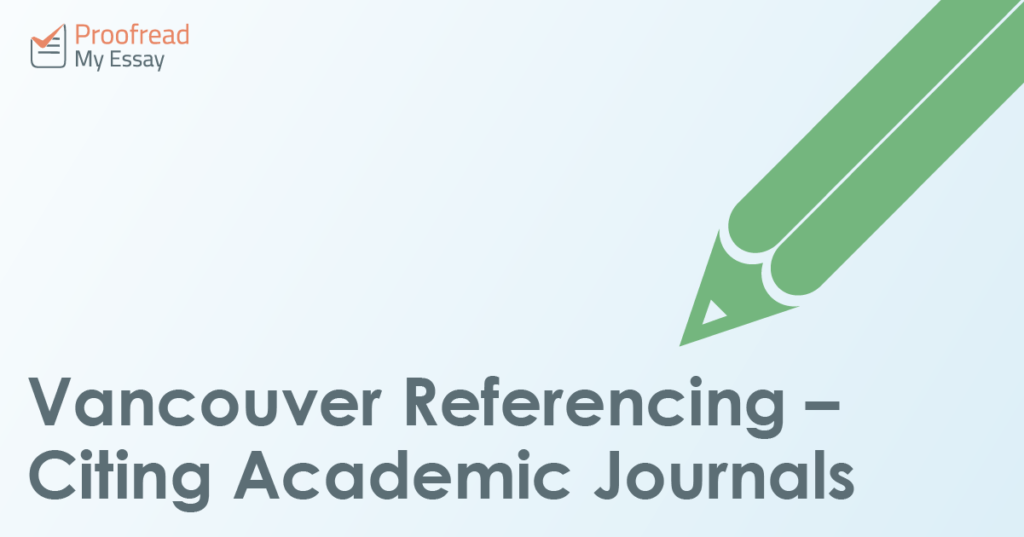Vancouver referencing is commonly used in medical and scientific papers. And if you’ve been asked to use this system, you’ll need to know how to cite academic journals. Here, then, we’re going to look at how to cite a source in your writing and the format for a journal article in the reference list.
In-Text Citations for a Journal Article
Vancouver referencing uses an author–number system, with citations indicated by numbers in the text. Each of these numbers will point to an entry in a reference list at the end of the document.
Sources are numbered in the order they appear in the text. The first citation in your paper will therefore be (1), with the number usually given at the end of the sentence. For example:
Sitting for prolonged periods has known health risks (1).
This source will also be the first source in the reference list.
In addition to the above, if the author of a source is named in the text, you should give the citation immediately afterwards. And if you are quoting a source, you should give a page number after the quote as well:
Sitting for prolonged periods has known health risks. (1) According to Jones (2), ‘office workers should stand for at least two hours a day’ (p. 102).
Find this useful?
Subscribe to our newsletter and get writing tips from our editors straight to your inbox.
In the second citation here, then, we’re citing page 102 of the second source in the reference list, which is by ‘Jones’.
Journal Articles in the Reference List
In Vancouver referencing, you need to give full source information in a reference list at the end of a document. The basic format for articles from academic journals in a Vancouver reference list is as follows:
(Citation number) Surname Initial(s). Title of article. Title of Journal. Year; volume(issue): page range.
For online articles, you should also provide a URL/DOI and date of access. In practice, then, we would reference academic journal articles like this:
(1) Chapman G. Long-term effects of inactivity on overall health. The Journal of Sedentary Studies. 1998; 12(4): 23–29.
(2) Jones T. Standing orders: A longitudinal study of posture in office workers. Occupational Health and Workplace Injuries. 2012; 38(1): 98–103. Available from: doi:10.1103/2012.06.5579 [Accessed 11 June 2018].
Vancouver Variations
Vancouver referencing is more of a ‘style’ than a system and the details can vary. If you are unsure which style to use, always check your style guide to confirm the format for citing academic journals. If you do not have a style guide, simply make sure your referencing is clear and consistent.



